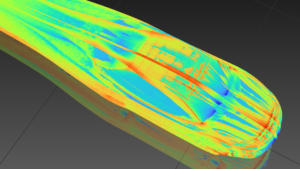 Aerodynamics development is all about trade-offs, striking the right balance between styling needs and aerodynamic concerns. Nearly all major automotive and truck manufacturers use computational fluid dynamics (CFD) during the development process to evaluate aerodynamic drag of proposed vehicle designs.
Aerodynamics development is all about trade-offs, striking the right balance between styling needs and aerodynamic concerns. Nearly all major automotive and truck manufacturers use computational fluid dynamics (CFD) during the development process to evaluate aerodynamic drag of proposed vehicle designs.
The analysis results shed considerable light on the impact of styling choices on aerodynamic performance, but they do not come close to achieving the potential of simulation to identify the best possible design that meets the various constraints and trade-offs involved in the project.
Recently, a number of enabling technologies have converged, making it possible to automatically simulate enough vehicle shapes over the duration of a weekend to accurately define a large aerodynamic design space.
By understanding performance over a large design space, aerodynamics engineers can provide detailed guidance to stylists about the specific effects on drag of numerous shape parameters in the form of response surfaces, sensitivity charts, Pareto plots and trade-off plots.
Armed with this information, stylists and aerodynamicists can then identify the vehicle shapes that yield the least possible drag while adhering to styling themes and other constraints.
Example Applications
- In-cylinder: combustion chambers, piston bowls, ports
- Intake/exhaust manifolds and ducts
- Turbochargers: impellers, single/twin-scroll volutes
- Fuel injectors and delivery systems
- EGR systems
- Exhaust after-treatment, catalytic converters, mufflers
- Torque converters
- External aerodynamics: wings, diffusers, mirrors, ducts, etc.
- Climate control ducts and fans
- Engine cooling jackets
In the automotive sector RBF Morph is used by leading companies like Skoda. See our case studies for automotive: click here.


